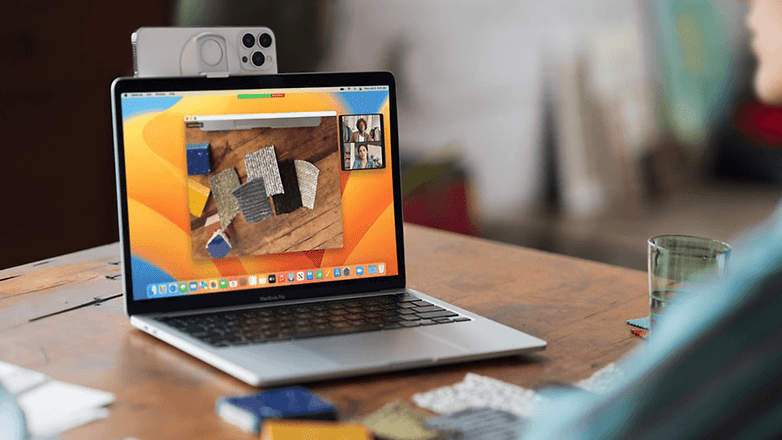
TL;DR
- Apple announced Continuity Camera.
- The feature turns your iPhone into a MacBook webcam.
- Continuity Camera features different video effects, such as studio lighting.
Apple Continuity Camera for macOS 13 and iOS 16
The obvious benefit of utilizing your iPhone as a webcam for your MacBook is the image quality. Your iPhone’s ultra-wide sensor is better than the tiny module just above your MacBook’s screen. Apple showed the different effects of Continuity Camera including Center Stage, where the software tracks you and keeps you in the center by cropping the frame. This gives an illusion of a camera panning from side-to-side.
Apple is also enabling the studio lightning feature known from their camera app with Continuity Camera supporting both landscape and portrait orientation. Other video effects are also possible as Apple has offered the necessary APIs for developers. And then there’s Desk View, that will intelligently crop the image created by the ultra-wide camera and show what’s on your desk in a separate window.
After trying the feature out, AppleInsider has dubbed it “shirtview” though, as the ultra-wide camera doesn’t seem to be wide enough to record the desk all the way up to the MacBook’s front edge as it’s shown in the screenshot below from the WWDC keynote. The feature will probably work best for people with large desks that use their MacBook on a stand together with an external keyboard and mouse.

In addition, capturing both video and still images using the attached iPhone are also enabled. The maximum resolution for the video is 1920 x 1440 at 30/60 fps depending on the effects.
How does Continuity Camera work and what are the requirements?
Attaching the iPhone on top of the MacBook’s screen will need a custom clip or stand while both wireless and wired connection are supported. Belkin is one of the accessory providers mentioned by Apple. However, there’s no pricing yet for their custom stand. Once the iPhone is in position, your MacBook automatically detects the device without the user even having to unlock it.
As the iPhone is now recognised as a system camera, Continuity Camera appears everywhere in macOS where cameras can be selected. Apple says its continuity camera will support FaceTime, Zoom and Microsoft Teams among other video conferencing apps. The camera options for activating studio lighting effects, the aforementioned desk mode or sound isolation for the microphone can be accessed through the Control Center on your Mac.
Only compatible iPhone devices running iOS 16 and any MacBook on macOS 13 Ventura can run the continuity camera. This means that the iPhone 7, iPhone SE (2020) and older models will not work with this feature.
What do you think of Apple Continuity Camera? Do you think it is necessary within Apple’s ecosystems? Hit us up in the comment section.






